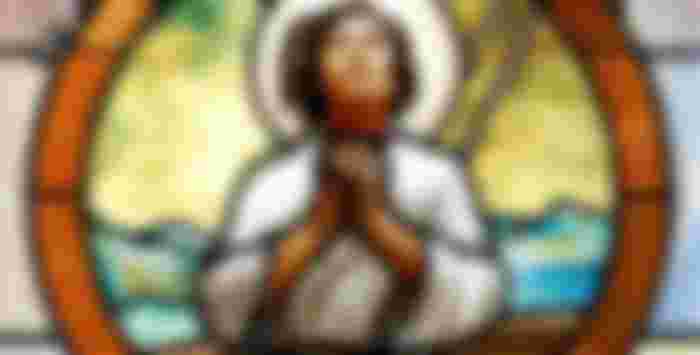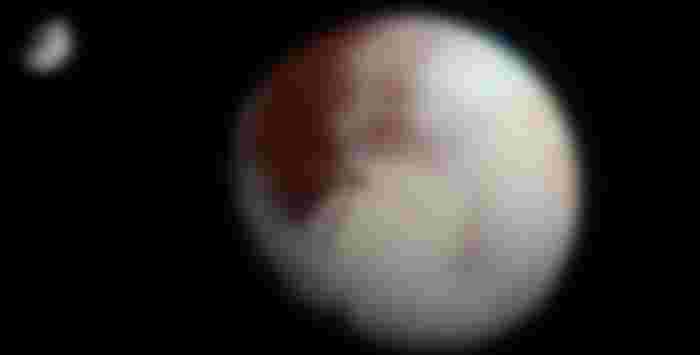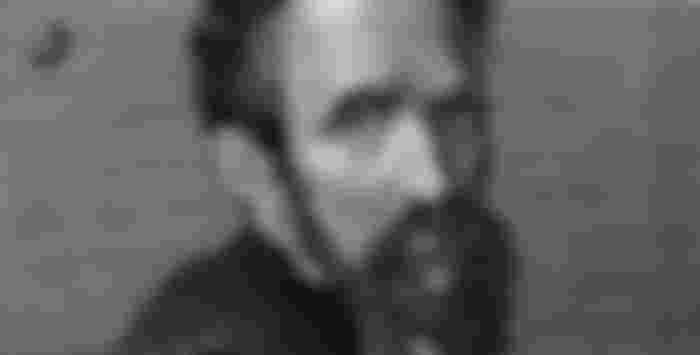02/18 What Happen Yesterday?

Lorenzo Ruiz of the Philippines was named Beato or Blessed by Pope John Paul II
February 18, 1981

During Pope John Paul II's first visit to our country, one of our compatriots, Lorenzo Ruiz, was designated as a beatified or blessed. On this day in 1981, in the face of millions of Catholics flocking to the Luneta Grandstand in Manila, Pope John Paul II announced the beatification of Lorenzo Ruiz, just one step towards canonization or ordination of a saint. This is the first time a beatification ceremony has been held outside the Vatican city. Lorenzo Ruiz became a saint with the so-called "16 Christian Martyrs of Nagasaki" on October 16, 1987, the first Filipino to be given such a title by the Catholic church.
Lorenzo Ruiz is a mestizo Filipino native of Binondo, Manila, who served as a sacristan and later a catechist in the church of Binondo. He married and had two children. In 1636 he joined the Dominican missionaries assigned to Japan to spread Christianity there. It was dangerous to spread foreign religion in Japan at the behest of the Tokugawa shogunate, but they persisted in indoctrinating the Japanese with Christianity.
Ruiz was arrested and sentenced to death in Nagasaki, Japan by hanging upside down in a deep pit, while other missionaries and Japanese converts to foreign religions were crucified. It is said that he did not renounce his faith and declared that even if he was given a thousand lives he would still dedicate his life to God. Ruiz died at the age of 42 two days later on September 29, 1637 and threw his ashes into the sea of Nagasaki. Spanish historian Fidel Villaroel documented in his book "Positio Super Introductione Causae" Ruiz's martyrdom in Nagasaki.
Clyde Tombaugh discovered Dwarf Planet (Pluto)
February 18, 1930

On this day in 1930, a major breakthrough in the field of astronomy caught the attention of many people around the world. American astronomer Clyde W. Tombaugh spotted a new planet. This was after he studied and compared the collected photographic plates at the Lowell Observatory in Arizona, United States. Another American astronomer, Percival Lowell, first predicted the existence of an unknown ninth planet across the orbit of the planet Neptune, due to the strange phenomena found in the gravitational pull of the planets Uranus and Neptune. Lowell and Tombaugh searched for nearly a decade for the location of the mysterious ninth planet. Until February 18, a dotted and distant planet was found on the photographic plates of the planets Uranus and Neptune. Other astronomers confirmed this and later announced to the public the discovery of a new planet on March 13 of the same year. There was even a contest in which so many names were chosen to be named on the newly discovered planet from Atlas to Zymal. The name Pluto was its chosen name, the entry of an elementary school pupil Venetia Burney. Pluto is the name of the Roman god of the underworld equivalent to the Greek god Hades, and the host of the deceased, and Burney was fond of classical Greek and Roman mythology. The name Pluto was chosen on the first day of May in the same year.
Astronomers thought that Pluto was only as big as our planet, but over the years it was discovered to be only about the size of the Moon. Pluto measures 2,376 km in diameter, and is 4.43 billion kilometers from the Sun in its closest position. It is the first and largest planet discovered within a region called the Kuiper Belt. The orbit around Pluto is so vast that at 4.7 km / s it would take another 248 years before Pluto completed its orbit around the Sun, and in 1979 it crossed the orbit of the planet Neptune. Prior to this, the first and largest Charon was discovered in 1978.
Pluto's main atmosphere is made of nitrogen and methane and its terrain is covered with thick ice because Pluto receives very little solar energy. In August 2006, the International Astronomical Union (IAU) removed Pluto from qualifying as a regular planet, but instead placed it in a new category of dwarf planets, or smaller planets less than 2,000 km in diameter and clean surroundings. Pluto did not reach one of its qualifications to become a planet.
July 13, 2013 when the New Horizons spacecraft first reached its closest position on the planet Pluto and the world first saw the appearance of this planet.
Italian Renaissance Artist Michelangelo Buonarroti has passed away
February 18, 1564

Today is 457 years ago since the death of one of the three giants in the field of art during the Renaissance in Italy Michelangelo di Lodovico Buonarroti Simoni or better known as Michelangelo. He died in the Roman city of Italy at the age of 88, and was given a luxurious burial in the city of Florence, Italy.
A native of Florence, Italy, Michelangelo was born on March 6, 1475. At that time, Florence was a luxurious and colorful cradle of art. Throughout Michelangelo’s career as an artist and sculptor he has created beautiful and beautiful sculptures, all of which have a religious theme; such as the sculptures of Pieta, Moses, and David. He was also commissioned by then-Pope Julius II to paint a colorful work on the ceiling and main altar of the Sistine Chapel in Vatican City, where his paintings were taken from Bible stories from Genesis to Revelation. . He was also commissioned to design the structure of St. Peter's Basilica, with its main dome. Michelangelo made a significant contribution to the development of art during the Renaissance.
Joseph Goebbels' historic speech at the Sportpalast in Berlin
February 18, 1943

Of all the speeches given by Nazi Germany's Minister of Propaganda Joseph Goebbels, his speech at the Berlin Sportpalast today in 1943 was the largest, one of the loudest and most powerful speeches he ever made. This gathering took place in Berlin, Germany more than two weeks after Germany's bitter defeat at Stalingrad.
It was past 4:30 pm when the gathering began at the Sportpalast, which was attended by thousands of Germans from various sectors; from bureaucrats, workers, soldiers and generals, Nazi party leaders and others. Needless to say, the whole building had a needle for the large number of attendees and the building had to be closed. Goebbels had long planned and prepared the gist of his speech, how to bring people to the point of "intense devotion" by obeying their Fuhrer's orders and winning the war. Goebbels' speech was vigorously monitored, and radio broadcasts nationwide covered what was happening at the Sportpalast.
At the beginning of Goebbels' speech, he first praised and thanked the so-called "heroes" who fought in Stalingrad. And like Goebbels' speeches, he reiterated his favorite blame on the German state of war, the Jews, who said the Jews were a huge instrument in spreading Bolshevism or communism in Europe. At the peak of his speech, he encouraged the people to take on a new and radical form of warfare, the "Total War", which he said would win them the war. His most intriguing question was, "Woll ihr in Totalen Krieg?" (Do you want Total War?), And the people's acceptance of the "Total War" was uplifting. With all his might, Goebbels convinced people to be unconditional and willing to follow and do the will of their Fuhrer in any way for the sake of their success. Viewers responded to Goebbels' speech, saying "Der Fuhrer befehl, wie Folgen!" (Order the Fuhrer, and we will obey!). Finally, with full force, Goebbels declared the country's slogan, "Nun, volk, sten auf. Und sturm brich los!" (Let's get up and release the storm!). Goebbels succeeded in bringing people to the pinnacle of "spiritual mobilization".
The surroundings of the Sportpalast can be uplifting at the end of Goebbels' speech which lasted about two hours. This speech can be considered the culmination of German fanaticism in Nazi idealism, but it is a manifestation of the fiery determination and intense desperation of the Nazis to win the war. But eventually, people will know how rude, brutal and infamous Goebbels' so-called "Total War" is.
Copyright © 2021 MidnightWriter. All Rights Reserved



